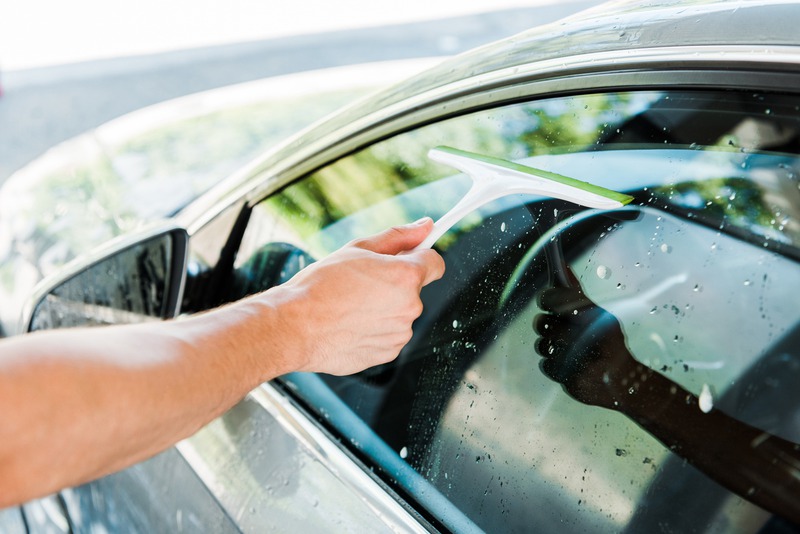Non-invasive dent repair, often called Paintless Dent Repair (PDR), is a technique that fixes dents without requiring a new paint job. Skilled technicians use specialized tools to gently massage dents out from behind the car’s body panels. This method maintains the original paintwork, ensuring your car looks as good as new without devaluing it. It’s quicker and cheaper than traditional repair methods, and because there’s no repainting involved, it’s eco-friendly. More car owners prefer PDR for these benefits, ensuring efficient, cost-effective, and quality repairs.
Why Choose Non-Invasive Dent Repair?
When it comes to fixing car dents, not all methods are created equal. Non-invasive dent repair, often called paintless dent repair (PDR), offers several key advantages:
Preserve Original Paint: One of the biggest perks is that PDR maintains your car’s original paint job. Traditional methods often require repainting, but with non-invasive repair, this isn’t necessary, preserving the car’s original value.
Cost-Effective: Since you’re not paying for expensive paint and labor, non-invasive dent repair is generally more affordable than traditional methods.
Quick Turnaround: Non-invasive techniques usually take less time, so you’ll have your car back on the road faster.
Eco-Friendly: Non-invasive repairs are better for the environment, reducing harmful emissions and waste without the need for paints and fillers.
How Does Non-Invasive Dent Repair Work?
Alright, let’s break down the process. Non-invasive dent repair involves a few key steps:
-
Assessment: First, a technician will inspect the dent to ensure it’s a good candidate for PDR. Not all dents qualify, especially if the paint is damaged.
-
Accessing the Dent: Next, the technician will gain access to the back side of the dent. This might involve removing panels or interior parts.
-
Massaging the Metal: Using specialized tools, the technician will carefully massage and push the dented metal back to its original shape.
And that’s pretty much it. It’s a skillful process but highly effective when done right.
Damage Repair
If your car’s ever been caught in a hailstorm, you know those little dings can be a real eyesore. Fortunately, non-invasive techniques are great for hail damage. So, if you need to repair hail damage on a car, PDR is a solid choice. It’ll save your car’s look and your wallet.
Getting the Job Done Right: Finding a Good Technician
It’s crucial to find a qualified technician for non-invasive dent repair. Here are some tips:
-
Check Reviews: Look for customer reviews and testimonials. A well-reviewed technician is likely to do a good job.
-
Ask for Certification: Certified technicians have the training and skills necessary for effective PDR.
-
Get a Quote: Always get a quote before any work begins. This helps avoid any surprise costs.
For instance, if you’re looking for paintless dent repair in Oakville, make sure you do a quick online search and read through reviews to find a reputable place.
Using Non-Invasive Dent Repair Services Locally
Looking for local services can make things more convenient. For example, if you’re in need of car repairs after a hail storm, seeking out local hail repair in Hamilton services can be especially beneficial. These services often employ technicians who are well-versed in various non-invasive repair techniques, such as Paintless Dent Repair (PDR), which is ideal for fixing dents without damaging your car’s paint job.
Comparing Costs with Traditional Methods
You might be wondering how non-invasive dent repair stacks up against traditional methods when it comes to cost. Here’s a quick comparison:
-
Materials: Traditional methods typically use paints, fillers, and other materials, which can be expensive. PDR mainly requires the cost of labor, making it cheaper.
-
Labor: Traditional methods are usually more labor-intensive. PDR is quicker and, thus, typically less costly.
-
Time: Time is money. Traditional repairs can take days, while PDR might be done in a few hours.
Maintaining Vehicle Value
Your vehicle’s value is important, especially if you’re looking to sell it in the future. Noninvasive dent repair maintains the original paint and doesn’t show up as a repair job upon inspection. This can keep your vehicle’s resale value higher compared to traditional repair methods that might involve color mismatches or visible patches.
Quality and Longevity of Repair
Non-invasive dent repair is not just about quick fixes. The quality and longevity of the repair are outstanding. Once a dent is fixed using PDR, it typically stays fixed. Unlike traditional methods that might weaken over time, the metal retains its strength and structure.
Non-Invasive Dent Repair: A Step-by-Step Guide
-
Inspect the Dent: Make sure the paint is intact and the dent is suitable for PDR.
-
Find a Good Technician: Ask for certifications and read reviews.
-
Book an Appointment: Many technicians offer online booking for convenience.
-
Drop Off Your Car: The technician needs access to the back of the dent.
-
Wait for the Repair: Same-day service is often possible.
-
Pick Up Your Car: Inspect the repair job to ensure it meets your expectations.
Final Thoughts
Non-invasive dent repair offers numerous benefits—it saves you time, money, and the hassle of traditional repairs. Plus, it keeps your vehicle looking as good as new. It’s no wonder why more people are turning to PDR for their dent repair needs. So, the next time your car suffers a dent, consider going the non-invasive route. Your car will thank you for it.





